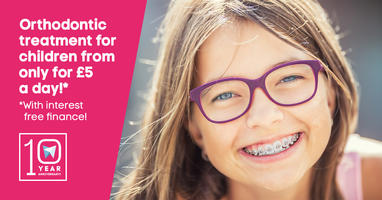Lingual braces are sometimes dubbed ’’behind the teeth” braces. The word ’’lingual” refers to the surface of the teeth next to the tongue. It literally means tongue side. Lingual braces are invisible as they are applied to the inside of the teeth and the brackets face back toward the tongue. This makes them ideal for all types of orthodontic needs including crowding, protruding teeth, open and cross-bites, gaps and spaces. Early lingual braces were perhaps more style over substance, and they weren’t as good as their traditional counterparts at straightening teeth.

Often times the question of invisibility comes up. Unless you are standing on your head or laugh with your mouth wide open, most people will not notice you have braces. Lingual Braces function in exactly the same way as other, more traditional fixed braces. But there is one important, aesthetic difference. You won’t have a shiny, metal smile. The latest lingual braces, however, are very efficient and can correct most orthodontic problems. But, again, the key advantage which makes them such an attractive orthodontic option: there isn’t a brace that’s less noticeable.
At Forest & Ray, our orthodontic experts are familiar with a range of lingual options and we are ready, willing, and able to explain them to you. This is important to know because while nearly all dental practices can deal with braces, not all dental practices offer lingual braces in their repertoire.
What Is Involved in the Process of Getting Lingual Braces?
First, the dentist takes impressions of your teeth using a plastic mold. This mold is then sent to a laboratory where customized brackets for each tooth are made. To keep the brackets in shape, they are set in wax and kept in a plastic applicator. This is a little like letting a jelly set. The second visit involves applying cement to the back of the teeth. Finally, the orthodontist installs the archwire, which provides the gentle tension that keeps on pulling the teeth into place.
Does It Hurt To Have Lingual Braces?
No, it does not hurt to have lingual partial braces. You may experience a temporary soreness at the beginning of treatment due to the pressure from the arch wire. Some patients will take an over the counter pain reliever, but most don’t need it.

What Can and Can’t I Eat?
You will need to avoid eating anything hard, chewy or sticky. These types of foods can shear off the brackets, so be careful with your lingual braces. We will provide a food list for you, most patients eat their normal foods, only modified (cut into smaller bites).
What About the Cost of Lingual Braces?
Lingual braces don’t cost an arm and a leg and many patients consider them well worth the investment considering what they get in return- the confidence and ability to smile even as their teeth are being invisibly straightened. Also, at Forest & Ray, we have flexible financing and payment options to make lingual braces a reality for you. Ask us!




